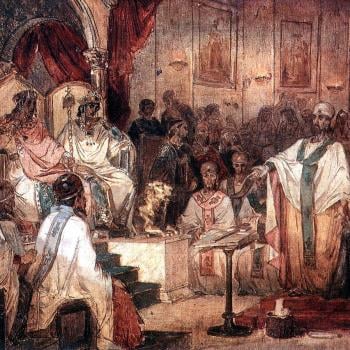Jewish mysticism is unique from all other systems. It cannot be properly understood apart from Judaism itself. While the essence of Hindu, Sufi, and Buddhist thought has remained essentially the same over the past two thousand years, Jewish mysticism has taken great leaps in one direction or another during the same period of time.
The earliest period of Jewish mysticism had much in common with Gnostic philosophy. The ecstatic ascent of the soul to the highest realm can be found in both systems during the first millennium of the Common Era. The latest incarnation of Jewish mysticism is Hassidism, and it contains few of the elements found in early Jewish mysticism. Since Jewish mysticism is highly esoteric, it is not easily understood by those who stand outside the tradition of Judaism.
Jewish mysticism today is represented symbolically by the Sephiroth, the inverted Tree of Life—interconnected circles, with names representing levels of consciousness. Each circle represents a focus for attention, and a symbolic method for making spiritual progress. The anonymous author of the book, Toward the One, states:
From Malkuth (Kingdom), the lowest level of awareness... One can rise to Yesod (foundation) by thinking of the body as part of the fabric of the planet; rise to Hod (majesty) by giving up the image of the self, and reach Netsach (perpetuality) by abandoning the mind to its own devices; and reach Tiphereth (adornment-mercy) by emotional sublimation, giving up the notion of the self; and reach Geburah (strength-judgment-power) by abandoning the notion of contingency or entities; and reach Chesed (loving kindness) by overcoming karma by love; and reach Binah (heart/left hemisphere of the brain) by giving up acuity; and reach Dhokma (the mystical state in which all ten Sephirot are united as one) by realizing that the causes of all events are intended to conceal Reality; and reaches Kether (the crown—the most hidden of all hidden things) in the consternation of intelligence. In the noughting of unity one reaches Ain Soph (infinity or nameless being) by ceasing to be.
Though bridges between mystical systems can be hard to build, the similarities of the mystical experience far outweigh the dissimilarities. All mystics describe the experience of Enlightenment as a sense of complete loss of one's ego-identity, and a complete absorption into the One—no matter what words are used to describe the One. The goal of all mysticism is the same.
One Buddhist scholar who tried to bridge the gap between Christian mysticism and Zen Buddhism was D.T. Susuki. He understood that the common goal of both systems was to discover reality beyond form. In his book, Mysticism: Christian and Buddhist, he makes many parallels between the teachings of Meister Eckhart and Zen Buddhism.
Meister Eckhart, himself a Christian monk, summed up his philosophy as follows:
When I preach, I usually speak of detachment and say that a man should be empty of self and all things; and secondly, that he should be reconstructed in the simple good that God is; and thirdly, that he should consider the great aristocracy which God has set up in the soul, such that by means of it man may wonderfully attain to God; and fourthly, of the purity of the divine nature.
One could replace the word God with Buddha-nature in Eckhart's statement, and it wouldn't really much matter. These words are only human constructs that are ultimately empty of meaning. Because the mystical experience itself is ineffable, religions and mystical traditions are limited in being able to describe the nature of the Absolute in words. To some extent, they are like the fabled blind men describing an elephant by touching only one part of it. Mystical language is always metaphorical.
Naming the Unnameable One
That-Which-Is, is beyond name and beyond form. It can be given names, or no name at all. All names for the ultimate ground of being can never be more than metaphors: Ultimate Reality, the Absolute, Universal Mind, Buddha-nature, Brahman, the All, Ain Soph, the Great Spirit, Tao, or the Force. In the end, Lao Tzu, in The Tao Te Ching simply calls it Tao:
The Tao that can be named, is not the everlasting Tao. Names can be given to it, but not the timeless name. As that which stands behind creation, it is nameless. As that which gives birth to creation, it is nameable. Because it is Reality Unseen, we should seek its hidden essence. Because it is Reality Seen, we should seek to understand its manifest nature. Both aspects flow from the same Source. Both are called mysteries, and the mystery of mystery is the gateway to the Essence that lies behind mysteries.




